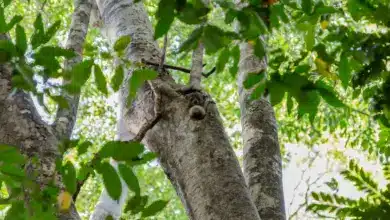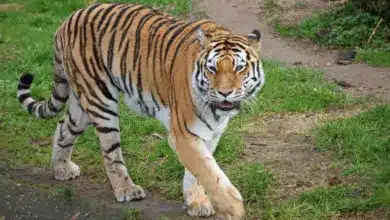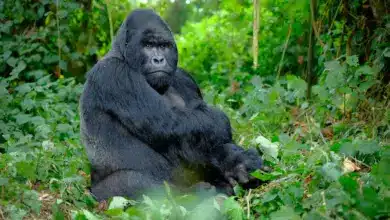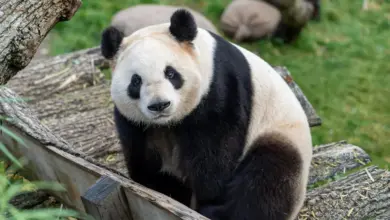The Most Endangered Animals In Britain
Many Animal Species In The United Kingdom Are Threatened With Extinction
The British Isles are home to numerous animals—mammals, birds, reptiles, amphibians, insects, crustaceans, and even bivalves—that are endangered, declining dramatically in number, and threatened with extinction. The United Kingdom’s Biodiversity Action Plan (UKBAP) lists a total of 1150 native animals and plants that the government considers as “priorities for conservation action.”
Mammals on the list include:
The water vole (Arvicola terrestris, above), which many conservationists consider to be the U.K.’s fastest-declining mammal. This water-loving rodent, which somewhat resembles a rat, suffers from habitat loss as well as from predation by mink, an invasive species similar to a weasel or stoat that is native to North America and which was brought to Britain because its fur was prized for making women’s coats. Mink are now reproducing rapidly and devouring voles.
The red squirrel (Sciurus vulgaris) is another British species whose population is dropping quickly due to a North American invasive animal. The red squirrel’s nemesis is the North American gray squirrel, which is a carrier of a viral disease called “squirrel pox.” While gray squirrels are resistant to the virus’s ravages, the native red squirrels die from it.
The European—or Scottish—wild cat (Felis silvestris) looks a great deal like a domestic house cat (F. catus). But, while the species of cat that lives with British aunts and grandmothers originated in North Africa, its close European cousin is a true, wild native of both continental Europe and the United Kingdom. Unfortunately, the two species are so much alike genetically that they interbreed, which has been causing the number of pure European wild cat to plummet.
There are also a number of birds on the BAP list, one of the most vulnerable of which is the skylark (Alauda aarvensis). The United Kingdom’s skylark population is only about 10 percent of what it was 30 years ago; the decline is attributed to changes in farming practices in the fields where the skylark looks for food.
The list includes reptiles, one of the most notable of which is the sand lizard (Lacerta agilis). The species has lost a great deal of habitat, and now is found only in the southern heathlands and on coastal sand dunes. It is strictly protected not only in Britain, but throughout Europe.
Endangered amphibians in the United Kingdom include the remarkable natterjack toad (Epidalea calamita), which can live for up to 15 years, and is the only species of toad that lives in Ireland. The natterjack toad’s serious environmental problems include habitat loss and acid rain, which makes their breeding pools and ponds less suitable for reproduction.
Lots of U.K. insects are in trouble, including bees, flies, moths and butterflies. The shrill carder bee (Bombus sylvarum) is a native bumblebee that was quite common at the beginning of the 20th century, but which now inhabits only a few areas of southern England and Wales. The shrill carder bee is declining due to habitat loss and intensified agricultural practices that make it difficult for the species to make a living.
Another endangered insect is the marsh fritillary butterfly (Euphydryas aurinia). The marsh fritillary butterfly feeds heavily on a weed called devil’s bit scabious, which grows in unfertilized meadows. Unfortunately, since fewer and fewer meadows are left unfertilized and uncut, there is less and less devil’s bit scabious for fritillaries to feed upon.
A third bug endangered in Britain is the blue ground beetle (Carabus intricatus), a rather striking insect that is nearly an inch and a half long (24-35 millimeters) with an metallic-looking purple or blue carapace. For many decades it was thought to be extinct in the U.K. However, in the 1990s a few blue ground beetles turned up near Dartmoor. We surmise that the beetle’s scarcity can be at least partially attributed to habitat change or outright loss.
The only crustacean on the list is the white-clawed crayfish (Austropotamobius pallipes). Restricted to waters in central and northern England and eastern Wales, this crayfish is yet another native animal that has fallen victim to an invasive North American species. The American interloper—another crayfish—carries a disease to which it is largely immune, but which proves fatal when contracted by its native-to-the-U.K. cousin.
Finally, we come to an endangered Scottish bivalve—the freshwater pearl mussel (Margaritifera margaritifera)—which can live for up to 250 years, and is native to around 50 rivers in Scotland. The freshwater pearl mussel actually does produce desirable pearls, which is a large part of the reason it is endangered. The species, fully protected since 1998, has suffered greatly from poaching. Scottish police and Scottish Natural Heritage are working hard to stem the tide of illegal pearl-mussel harvesting.
You’ll find more on the U.K.’s priority species here.



